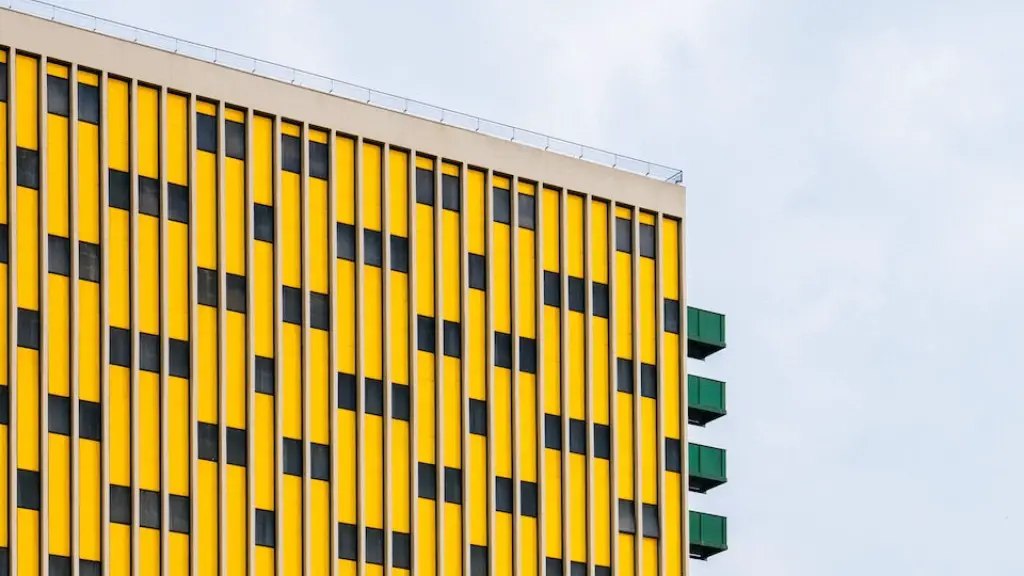Humanitarian architecture is the design and construction of buildings and other structures for the benefit of people in need. It includes the provision of safe, clean, and comfortable living and working spaces, as well as the design of buildings that are accessible and safe for people with disabilities.
Humanitarian architecture is a branch of architecture that focuses on designing structures that serve a humanitarian purpose. This could include designing shelters for disaster relief, designing homes for refugees, or designing schools in developing countries.
What are the principles of humanitarian architecture?
The principles of humanity, neutrality, impartiality and independence are fundamental to humanitarian action. Humanity means that human suffering must be addressed wherever it is found, with particular attention to the most vulnerable. Neutrality means that humanitarian action must be impartial and independent, and must not take sides in conflicts or other disputes. Impartiality means that humanitarian action must be based on need alone, and must not be influenced by political, economic or other considerations. Independence means that humanitarian action must be free from any political, economic or other control.
Humanitarian architecture is a type of architecture that focuses on improving the living conditions of people in areas that have been affected by natural disasters or poverty. By paying attention to the surroundings, its land, climatic conditions, resources, and, most importantly, its community, design can improve people’s living standards and grant them what they need for a healthier lifestyle. In many cases, humanitarian architecture is used to provide shelter for people who have lost their homes due to a natural disaster. However, it can also be used to improve the living conditions of people who are living in poverty. For example, by designing buildings that are energy-efficient, using sustainable materials, and providing access to clean water, humanitarian architects can help to improve the quality of life for people in developing countries.
What is a humanitarian design
Humanitarian design is a term that can be used to describe the process of designing products, services, or systems for populations affected by natural and/or human-made disasters. The goal of humanitarian design is to improve the quality of life for those affected by disasters, and to help them recover and rebuild. Humanitarian design can be used in a variety of contexts, from designing safer buildings and infrastructure in disaster-prone areas, to developing new technologies to help with disaster relief and recovery efforts.
1. Residential architecture: This type of architecture focuses on the design of private homes and apartments.
2. Commercial architecture: This type of architecture focuses on the design of public spaces such as office buildings, hotels, and retail stores.
3. Landscape architecture: This type of architecture focuses on the design of outdoor spaces such as parks, gardens, and public squares.
4. Interior design architecture: This type of architecture focuses on the design of indoor spaces such as homes, apartments, and offices.
5. Urban design architecture: This type of architecture focuses on the design of public spaces in cities, such as parks, plazas, and streetscapes.
6. Green design architecture: This type of architecture focuses on the design of environmentally sustainable buildings and spaces.
7. Industrial architecture: This type of architecture focuses on the design of industrial buildings and spaces, such as factories, warehouses, and storage facilities.
What are the 7 humanitarian principles?
The Red Cross and Red Crescent Movement is guided by seven Fundamental Principles: Humanity, impartiality, neutrality, independence, voluntary service, unity and universality. These Principles underpin everything we do, from providing humanitarian assistance during armed conflict and natural disasters, to supporting vulnerable people in our communities.
Our work is founded on the belief that all human beings are equal and deserve to be treated with dignity, regardless of their race, religion or political beliefs. We are impartial and provide assistance based solely on need, without discrimination. We are neutral in conflicts and do not take sides.
We are independent from any government or political affiliation. Our work is voluntary and we rely on the generosity of donors to fund our lifesaving work.
We are united by our common purpose and work together across the globe to make a difference. Our work is universal and benefits people in need, regardless of their nationality, race or religion.
The humanitarian principles are important guidelines that dictate how humanitarian aid should be given. The main principles are to prevent and alleviate suffering, to protect life and health, to ensure respect for the human being, and to be impartial. These principles ensure that humanitarian aid is given in a way that is most likely to help those in need and to avoid causing further harm.
What is the purpose of the humanitarian?
There are many humanitarian organizations that work to help those affected by natural disasters or man-made crises. The objectives of these organizations are to save lives, alleviate suffering and maintain human dignity. They also work to prevent such disasters from occurring in the first place, and to prepare for them if they do occur.
The UN agencies with humanitarian mandates play a vital role in providing relief and assistance to those in need. They work to ensure that basic needs are met and that people have access to essential services. These agencies also work to promote and protect the rights of vulnerable people, and to help them rebuild their lives after disasters or conflict.
What happened to Architecture for Humanity
Architecture for Humanity was a great organization that helped a lot of people in need. However, it unfortunately closed down in early 2015.
Humanitarian assistance is typically provided in the form of food, water, shelter, and medical care. It’s often provided in the wake of natural disasters, but it can also be used to provide relief in other situations, such as man-made disasters or conflict zones.
One of the main goals of humanitarian aid is to save lives. But it can also be used to improve the quality of life for those who are affected by a disaster or crisis. For example, it can be used to provide clean water, food, and shelter. It can also be used to provide medical care and supplies, or to help people rebuild their homes and livelihoods.
Humanitarian aid is typically provided by governments, international organizations, and charities. Individuals can also donate to relief efforts.
What are examples of humanitarian projects?
Humanitarian aid is any form of assistance that is provided to people in need, in order to improve their lives or protect their rights. There are many different ways to provide humanitarian aid, and below are just ten examples:
1. Donating blood: Blood is a vital resource that can save lives, so donating it is a great way to help others.
2. Raising funds for a family in need: There are many families who are struggling to make ends meet, so raising money to help them cover their basic needs is a great act of kindness.
3. Volunteering at an animal rescue organization: Animal rescue organizations provide a vital service to our furry friends, and volunteering your time to help out is a great way to give back.
4. Making weekly donations to the local food pantry: Food pantries provide a vital service to many families who cannot afford to put food on the table, so making regular donations helps to ensure that they cancontinue to help those in need.
5. Visiting an elderly person in a nursing home or hospital: Many elderly people feel isolated and alone, so taking the time to visit them and chat with them can brighten their day and let them know that they are not forgotten
The World Humanitarian Summit is an annual event that brings together world leaders to discuss pressing humanitarian issues. The summit focuses on four main themes: humanitarian effectiveness, reducing vulnerability and managing risk, transformation through innovation, and serving the needs of people in conflict. The summit provides a platform for world leaders to share their ideas and solutions on how to improve the humanitarian system.
Which type of architecture has highest salary
Architecture is a broad field with many different career paths. The ten highest paying architectural careers are:
1) Landscape Architect
2) Architectural Technologist
3) Architectural Designer
4) Preservation Architect
5) Green Building & Retrofit Architect
6) Commercial Architect
7) Healthcare Architect
8) Lab/Research Facility Architect
9) Residential Architect
10) Extreme Architect
Each of these careers has the potential to be very lucrative, depending on experience, geographical location, and other factors. It is important to do your research before choosing a career in architecture, so that you can be sure to find the path that is right for you.
There are 7 branches of architecture for you to consider: Landscape Architect, Urban Planner, Restoration Architect, Research Architect, Lighting Architect, Political Architect, and Extreme Architect. Each one offers a unique perspective on the built environment and how to create successful spaces. No matter which branch you choose, you’ll be able to make a positive impact on the world around you.
What are the 3 rules of architecture?
Firmitas, utilitas, and venustas are the three main principles of classical architecture. Firmitas refers to the strength and durability of a structure, utilitas to its usefulness, and venustas to its beauty.
Humanitarian aid is vitally important in providing relief to those affected by natural disasters and other crises. Here are ten examples of humanitarian aid that can make a huge difference:
1. Disaster relief – when a natural disaster strikes, humanitarian aid can provide vital support to those affected.
2. Shelter – having a safe place to shelter from the elements is crucial for survival.
3. Food – many people around the world suffer from food insecurity, and humanitarian aid can help to provide them with the sustenance they need.
4. Agricultural crisis aid – agricultural crises can devastate communities and lead to widespread hunger. humanitarian aid can help to prevent this.
5. Water – clean water is essential for survival, and humanitarian aid can help to provide it in areas where it is scarce.
6. Sanitation – clean sanitation facilities are essential for preventing disease.
7. Medical care – when people are sick or injured, they need access to medical care in order to recover.
8. Children’s aid – children are especially vulnerable in times of crisis, and humanitarian aid can help to protect them and provide for their needs.
9. Psychological support – people who have been through a traumatic experience often need psychological support in order to recover.
Final Words
Humanitarian architecture is a term used to describe a specific type of architecture that is designed to bring about social and economic change in disadvantaged communities. This type of architecture often involves the use of sustainable design principles in order to create buildings and infrastructure that can be used by the local community for years to come.Humanitarian architects often work with NGOs and other organizations in order to bring about positive change in the lives of people who are living in poverty or who are affected by natural disasters.
Humanitarian architecture is a field of architectural practice and research that focuses on the design of spaces and buildings that meet the needs of people affected by humanitarian crises, such as natural disasters, conflict,
and poverty. It is a relatively new field, and its goal is to provide safe, dignified, and appropriate shelter for people in need.





